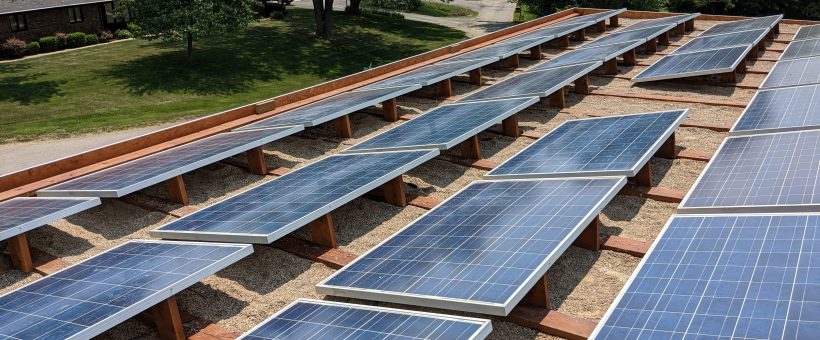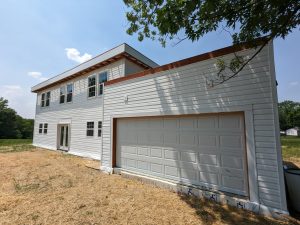
We are close to starting our 4 year immersion programs in Builder Science, Construction Management, and Civilization Construction – with the Seed Eco-Home 4 as the product. We are on our way to bootstrap GVCS development to completion by 2028. Take a look at the updated progress on the GVCS that I published today on the wiki and copied below, which puts the Seed Eco-Home and our larger goals a little more in perspective. I plan to re-engage on social media once I regain my ample spare time.

GVCS – Original Definition
The Global Village Construction Set (GVCS) is a modular, DIY, low-cost set of blueprints that enables fabrication of the 50 different Industrial Machines that it takes to build a small, sustainable civilization with modern comforts. The name, GVCS, has been coined for the first time in 2008 – at a lecture at the University of Missouri, Columbia – see UM Presentation.
Definition Evolution – GVCS 2.0 and GVCS 3.0
The original definition still applies, with more specifications added. Note that we are aiming for GVCS 1.0 by 2028.
- A set of fundamental technologies sufficient to build a thriving economy anywhere in the world. This implies that the the set must be proven to allow efficient production of food, shelter, consumer goods, cars, fuel, and other goods – except for exotic imports (coffee, bananas, advanced semiconductors in the initial phases of GVCS, etc). This is included in GVCS 1.0.
- Reality check on the development cost of each product. Current experience makes us estimate that the development budget is roughly $1M per product for a total GVCS development budget need of $50M by 2028. For example, the Seed Eco-Home development cost to present has been about $1M, and we expect a similar figure to obtain for other technologies. The expected cost of first prototypes is on the order of $10k, but multiple prototypes are needed. Further, production engineering can easily cost 10x the initial prototype, and enterprise model development adds another factor of 10x – for a rough budget of $1M for economically competitive products that become candidates for Distributed Market Substitution. Given an essential absence of Collaborative Literacy throughout the world and financial pressure to make a living, OSE does not have sufficient infrastructure to allow for scaling of a Linux-style development effort, because the material costs and coordination costs are prohibitive. This Linux-style development infrastructure still remains our goal, but we don’t see it becoming realized without significant capital investment into physical plant.
- GVCS 2.0 -Each ‘product’ must be expanded to its fuller product ecology in terms of both Recursion and Modular Product Ecosystems. For example, for the humble cement mixer – we are now expanding to distributed Solar Concrete production (recursion in terms of material feedstocks) and application to Seed Eco-Home 4 for foundations, driveways, stabilized CEB production, hardscapes, countertops, roof shingles, polished concrete, among others. We are aiming for GVCS 2.0 within 1-2 years of GVCS 1.0. This relies on rapid scaling via modular enterprise replication at the point that GVCS 1.0 is completed, and significant financial feedback loops are created.
- GVCS Opportunity – the scalable, open, modular design language for product ecosystems appears to be working at present – and working better than expected. The downside is that it takes much more effort to design such a product ecology, and thus much more time to teach it. Thus our product development programs now center on a 4 year program, not one month Dedicated Project Visits which were begun in 2009. The new development route allows for the continuity required to first, learn core aspects of OSE Culture and Collaborative Literacy, and engage in the due diligence to achieve Immortality in any undertaking. This is consistent with general principles of Time Binding.
- GVCS 3.0 is open-sourcing of the entire Technosphere, in the broad sense. This means that collaborative development has been normalized, patents have been eradicated, trade secrets are a rare occurrence. The cost for this is about $50B, less than the price of a global annual cup of coffee. This also means that global instability has been significantly reduced by making self-determination accessible to all via financial independence, and global moral intelligence has increased greatly as integrated education becomes accessible to everyone. Incentives for rogue actors, dictatorial behavior, and other evil have been reduced to a minimum. We expect this transition to happen around 10 years from GVCS 2.0, and occurring within a similar timeframe as the Singularity. We aim for collaborative culture to enter before the singularity, otherwise the threat of evil AI dominating remains real. The battle is ongoing.
- Civilization Startup Costs – with much less experience in 2011, I concluded that a number of lifestyle experimenters could coordinate the startup of their own digital-age village for a cost of $10k for each person (see description of the GVCS TED Talk), effectively buying out at the bottom. This, paradoxically, still holds true. However, that $10k will not be the cost of materials, machines, or overall infrastructure. It will be an investment in a skill set and a mindset – which is then able to create any enterprise, including a village. That means integrated education. We are basing the development of our 4 year immersion program on the principle that it should be affordable. The intent is not downshifting, but rising to a global grand challenge.

Comments are closed, but trackbacks and pingbacks are open.